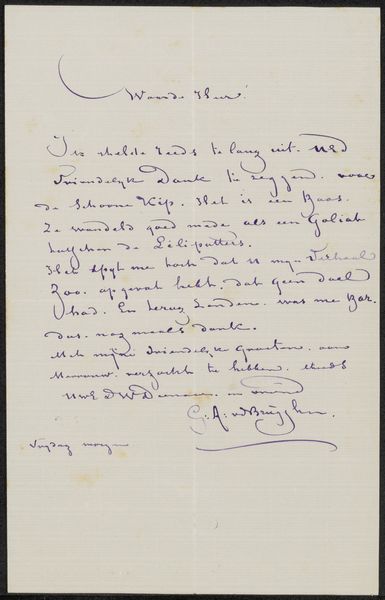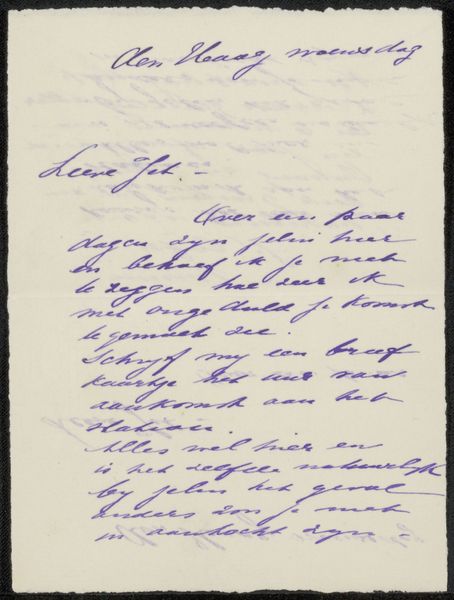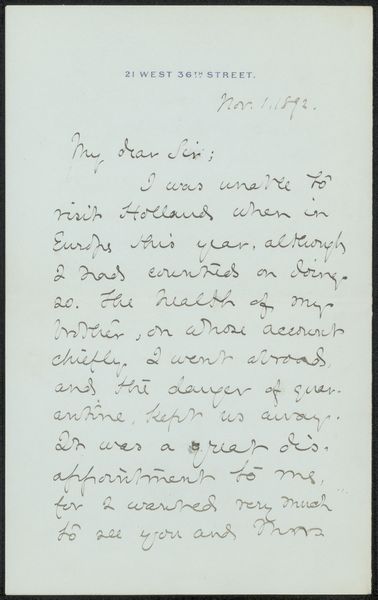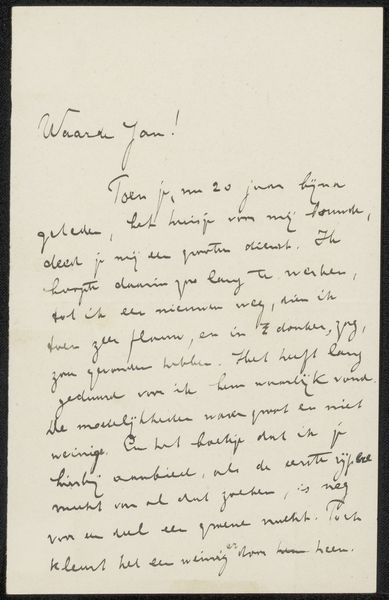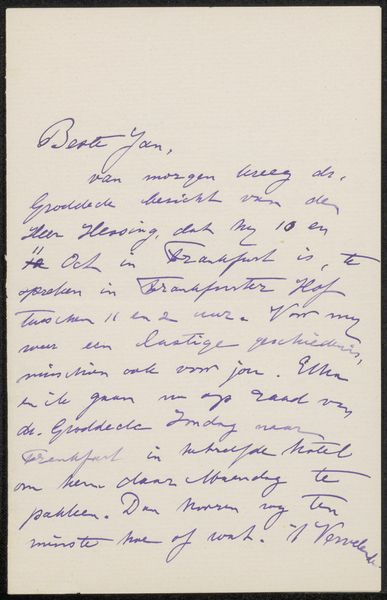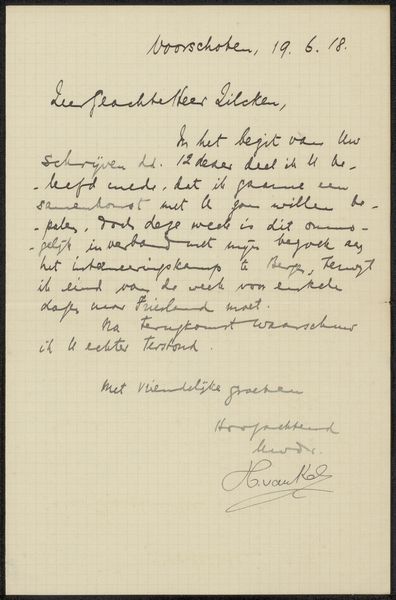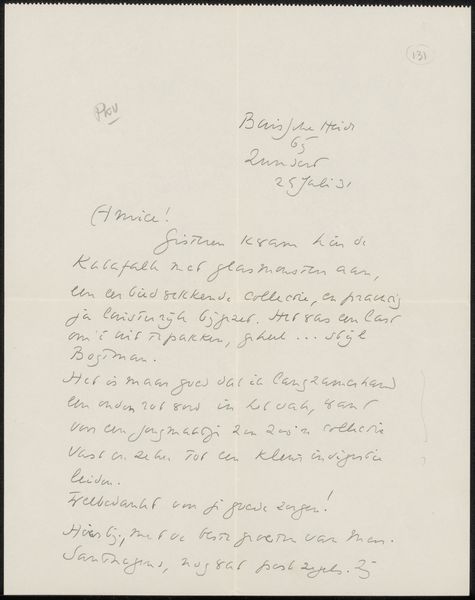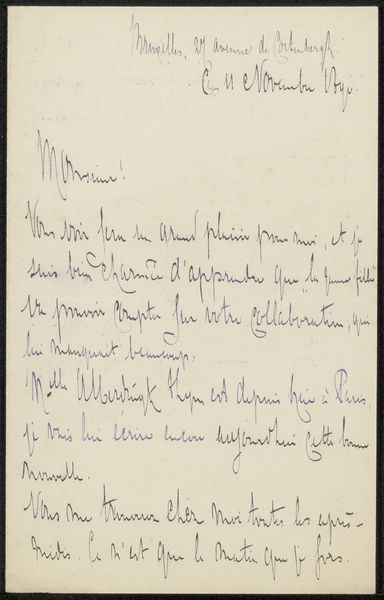
drawing, paper, ink
#
drawing
#
hand-lettering
#
hand lettering
#
paper
#
personal sketchbook
#
ink
#
calligraphy
Copyright: Rijks Museum: Open Domain
Editor: So, this is "Brief aan Françoise W.M. Bonger," a letter from possibly 1960. It's ink on paper, with some lovely calligraphy. It feels so personal, like peeking into someone’s private correspondence. I wonder about the circumstances of its production. What's your take on this work? Curator: What strikes me is how the conditions of its making—the 'American Hotel' letterhead, the visible wear on the paper—shape its meaning. We aren't simply viewing words; we are confronting a material object embedded in a network of production and exchange. Think about the hotel, a site of transit and commerce. How does this influence our reading of what is ostensibly a personal note of thanks? Editor: That’s interesting. I was focusing on the content of the letter. Does it matter that the context seems so...ordinary? It’s not like it's a royal decree or anything. Curator: Precisely. Its "ordinariness" is crucial. It disrupts the traditional hierarchy between high art and everyday life. This letter elevates the value of craft through labor and the handwritten. It's important to consider how the act of writing itself, a form of manual labor, imbues this object with significance. We can ask, who benefits from this labor, and how does its purpose tie into social relationships? Editor: So, you’re saying its value isn’t just in its message, but in the process of its creation and the environment it comes from. Like, it's not just the art of the words, but the art of… living, almost? Curator: Exactly! We examine its materiality and its position in a web of social relations. Examining how it challenges how we understand not only the intent but production and dissemination as artistic processes. Editor: I never thought of analyzing something like this letter through that lens before. It’s definitely changed my perception of everyday objects. Curator: Mine, too. Considering materiality, social dynamics, and the modes of production enhances the context within which this creation exists.
Comments
No comments
Be the first to comment and join the conversation on the ultimate creative platform.
